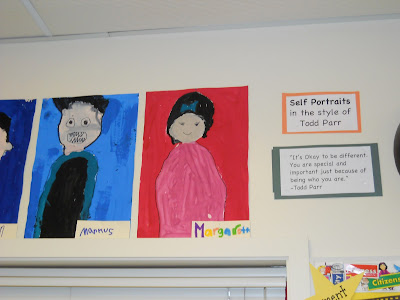Apples- Like a Scientist- As I wrote in our previous post, "What is a Scientist," our science program really focusses on the dispositions of a scientist. We want our kids doing science. During term one, once we have completed our introduction to what is a scientist, we focus on the skill of observation. We expose the children to what observation is and how scientists use their five senses to observe objects, events and organisms. During and after observing something, scientists often communicate their observations to others through talking, writing, drawing or taking photos. We do lots of group shares, where we sit in a sharing circle and practice using the language of a scientist, "I noticed" or "I observed." Our apples were no different. Students were given magnifying glasses and were presented with a whole apple and an apple cut in half. After observing their apples, they were asked to complete a page in their science notebook recording their observations.
You will notice that the students are using text boxes to communicate extra information. We have been doing mini lessons on non fiction text features during our Fact Friday lessons (more on this later) as well as focusing on using text boxes in science.
This led us into our next activity, recording our wonders about apples. Each student was given a piece of paper to record things they wondered about apples.
After the lesson, I chose four wonders to investigate as a class. I chose some wonders that can be tested and some wonders that needed to be researched. I wanted students to understand the idea that scientist test things, but also research questions that they have. Over the next several science blocks, we worked in small groups to find answers to our wonders. The wonders that we investigated:
Will an apple sink or float?
Why do apples have cores?
Why do worms like apples?
How many seeds in an apple?
Apples- Like a Mathematician
The students had a chance to peel and core and apple using this fancy machine.
We predicted how long the skin would be and measured with unifix cubes. I got the idea from this amazing math and science blog
We predicted and counted the pieces that came off some of the apples. Then once peeled and cored, we tried the three different kinds of apples and graphed the results.
I found this poem and idea on an excellent blog, but now I can't find the blog where I found it. The poem was written by someone else and when I come across who it is, I will link it up.
Apples- Like an Artist To end our unit, we looked at apples like an artist. The children sketched their apple and then used tissue paper and watered down white glue to decorate their apples. They turned out great.






























